Our second day in Sonoma was spent mostly in a canoe. From Burke’s Canoe Trips near Forestville, we paddled 10 miles down the Russian River to Guerneville, passing beneath tall redwoods and spying a surprising wealth of animals including wood ducks and a family of mink. It was a glimpse of another aspect of Sonoma that is largely ignored by the travel press: it is just as conducive to outdoor adventure as it is foodie exploration.
But as soon as we stepped off the river, I was back on tasting mode. “Where to next?” I asked Hailey.
“You look like you already know where we are going,” was her reply.
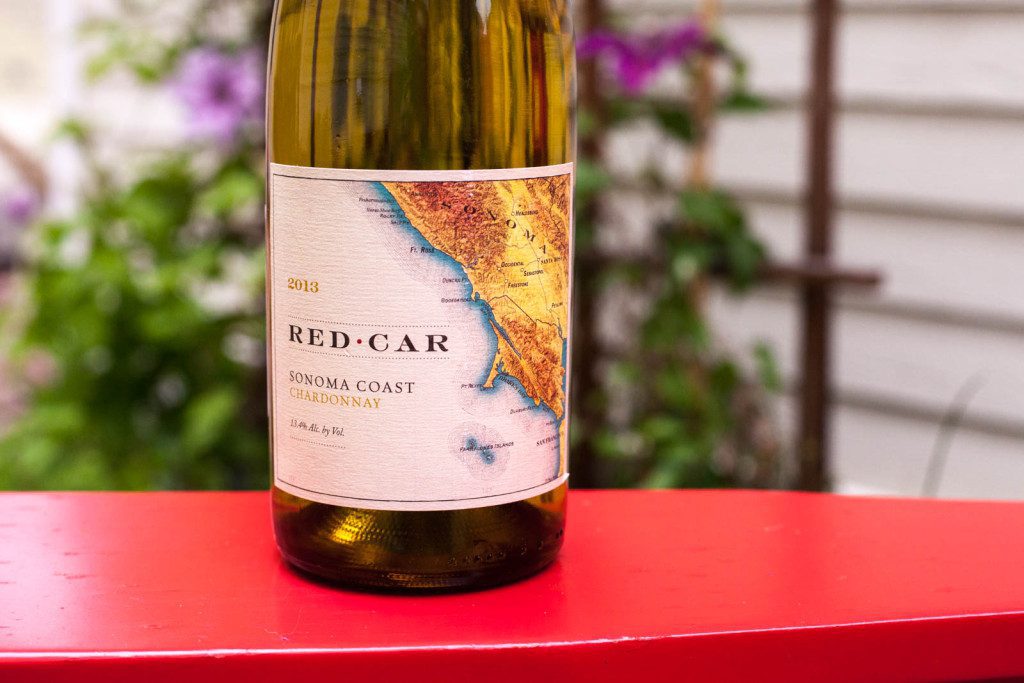
Yep: I wanted to visit Red Car. A month before, their Sonoma Coast Chardonnay blew me away. For me, it was a rare thing: a Chardonnay without noise. There was a purity in the fruit, and a restraint on the oakiness that really allowed for some compelling secondary aromas. Having visited their website and read about them online, they seemed like the perfect gateway to exploring the various cool-climate vineyards of the Sonoma Coast, especially the much vaunted “West Sonoma Coast” (which, we have already established, is a ridiculous name).
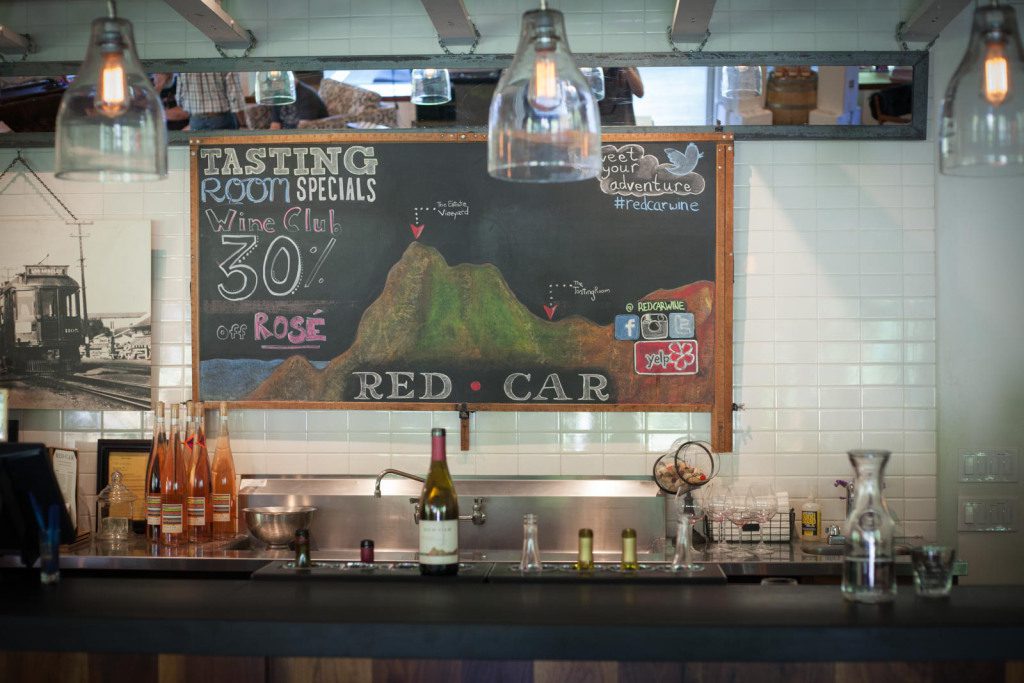
At a non-descript intersection between Forestville and Sebastapol, we found the funky tasting room. The décor felt more like a modernist boutique than a golf course clubhouse (the latter of which still seems to be the preferred vibe for tasting rooms these days). The latest wine club deal was artfully written in chalk behind the bar; on another wall was a large neon sign for the old Compact Disc logo. Carefully curated souvenirs and hipster objet d’art lined another wall. I would have had a reaction to it if I weren’t just so happy to be off the river and in an air-conditioned room.
The Rosé
The first wine served was their Sonoma Coast Rosé of Pinot Noir (★★★★ 1/2), which had a light-on-its-toes body and zero tartness.
Frequently, rosé of Pinot Noir is made from either “bled-off juice” (i.e. leftovers), or lesser quality grapes. Its the brunch wine if you will, and I don’t mean that from a pairing standpoint. Just as chefs put their best staff and most attention on dinner service — and simply use brunch as a means to cash in on the remaining ingredients still in the fridge — winemaker’s often do the same with rosé, particularly in Pinot Noir regions. The grape is fickle. It requires a great deal of care and attention. Sales of rosé — either made from juice that’s been bled off or from inferior grape clusters — can help cover some of those costs.
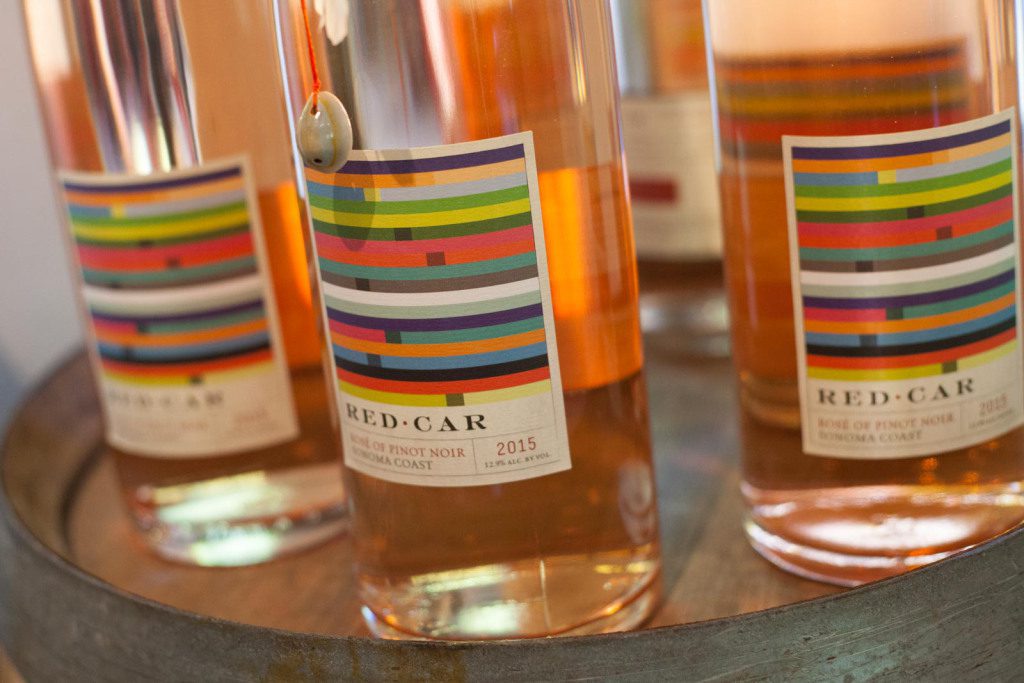
But Red Car’s tasting room manager, Rick Bidia, noted that they are much more deliberate in their approach. They actually dedicate vineyard space every year to growing Pinot Noir grapes specifically for rosé. The 2015 hails from three separate vineyards, and is whole-cluster pressed and vinified as a vin gris, to yield added complexity. Being deliberate in making a great rosé, rather than throwing it together with leftovers, truly showed. There was a beautiful swirl of citrus and cherries in this bone-dry rosé. Dare I say, it was among the best rosé I’ve sampled in recent years.
The Chardonnay
Next came the Chardonnay, with a glass of the aforementioned Sonoma Coast blend, followed by a taste of their Ritchie Vineyard Chardonnay.
The Ritchie Vineyard in the Russian River is widely held by Chardonnay fans as divine terra firma. Wine Enthusiast lists it as one of California’s “Grand Cru” vineyards for Chardonnay, and everyone from Paul Hobbs to Ramey to Arista buys grapes from Kent Ritchie’s vineyard. The reason is a mixture of the vineyard’s ideal climate, loose sandy soil, and most important, age of the vines. Planted in 1972, these 44-year-old vines have miniscule yields, which leads to Chardonnay of great character.
Red Car’s version of a Ritchie Vineyard Chardonnay (★★★★★) is light and creamy, yet pronounced and symphonic. It is easy-going and drinkable if you want it to be, but detailed and conversational if you pay attention to it. I really needed more time with this wine (translation: a full bottle next time, please), but the complexity on the nose alone recalled lemon one moment, lime the next, buttered toast, a handful of crushed herbs and, oddly, a bit of fresh-picked tomatillo. (No, can’t be, I thought. <sniff. sniff.> Yes, tomatillo.)
I’ve had a personal renaissance with Chardonnay in the past year, and this wine affirmed that — when done right — Chardonnay remains my favorite white wine.
The Pinot Noir
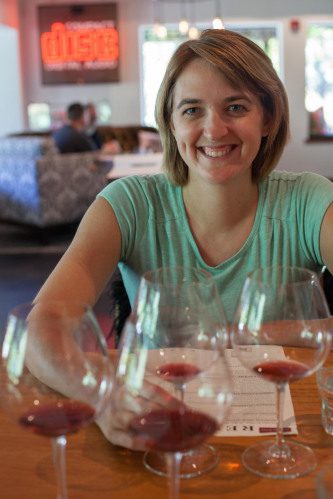
The parade of five-star wines continued to Pinot Noir, where we sampled one from the Hagan Vineyard, and one called Heaven and Earth which comes from the Bohemian Station Vineyard. Both were from the 2013 vintage, and both vineyards are near Occidental. But to my palate, they were clearly different wines with very different personalities.
To me, the Hagan Vineyard Pinot Noir (★★★★★) displayed an intriguing element of Indian spices on the nose, while the palate was awash in bright yet powerful red fruit. There were mineral edges to the wine, and while it was a little bit more burly than most Pinot Noir from a cool climate, it was also playful. This tension made it distinctive and exciting to taste.
The Heaven and Earth Pinot Noir (★★★★★) was equally compelling, but perhaps a little more after my heart. This was a wine with an Old World personality. If I were to personify it, I’d say it was elegant and experienced — a wine that knew who it was. Each sip doled out rich raspberry notes as well as traces of herbs, wildflowers and oak.Together with the Ritchie Vineyard Chardonnay, the MacRostie Wildcat Mountain Pinot Noir, and one more wine (coming in the next post), it was the among the best wines of our Sonoma trip.
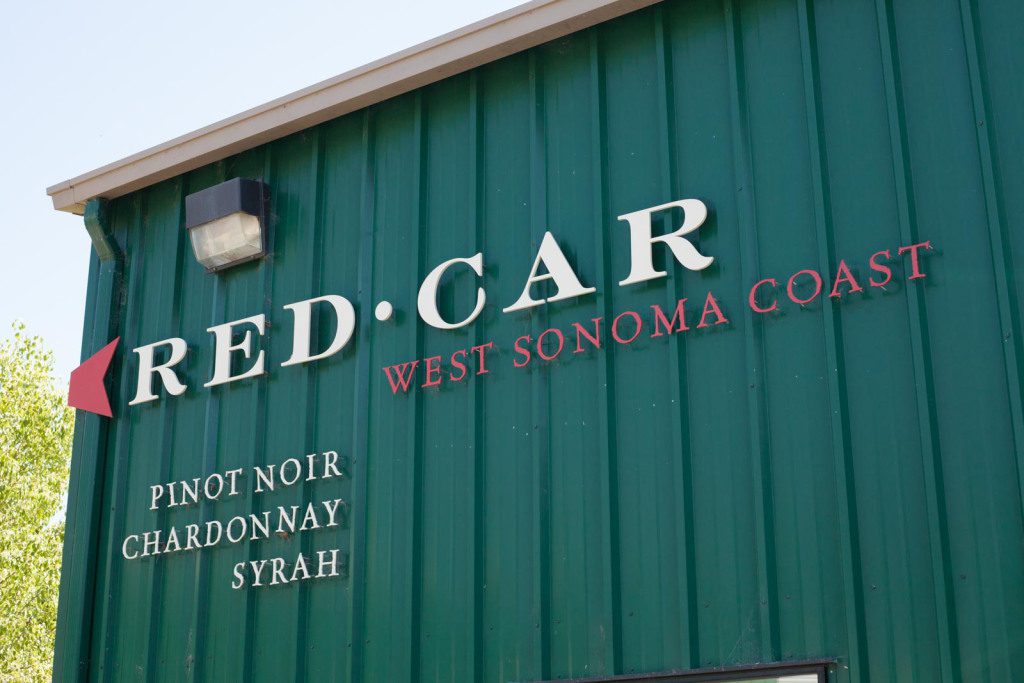
Yet, We Left Empty-Handed
But then, there was a minor problem.
It cost $70 for a bottle. And the Hagan Vineyard Pinot Noir was labeled as “wine club only” on the menu.
Consistently throughout this trip — as well as our time in Oregon — American winemakers are incentivizing wine-club memberships with specific single-vineyard wines. Many West Sonoma Coast producers only sell to a mailing list. By creating exclusivity, they drive up the demand.
As a general practice, that’s fine. They can do what they want. But from a consumer side, I don’t like wine clubs at all: they limit your imagination, stifle adventure, and most of all, they are a terrible value.
(Funny enough, just today I found the 2013 Red Car Hagan Vineyard Pinot Noir is currently for sale on wine.com. So why label it as “Wine Club Only”)?
I get that making Pinot Noir requires a hell of a lot of labor and capital. I get that the best sites in California are on steep hillsides, that the grape-grower and the winemaker assume a lot of risk in bringing such a natural, expressive wine to fruition. But after two days, Sonoma’s sticker shock was getting old. Even the rosé cost quite a bit.
Rick concluded the tasting with a Syrah, which was — again — delicious, complex and expressive. “What can we send you home with today?” he asked.
As much as I wanted to buy a wine, it just didn’t make practical sense. We had dinner plans (and I wasn’t going to pay a corkage fee on top of the bill), and the next few days we’d be driving a lot. Would my $70 wine get too hot in the trunk?
We paid the tasting fee, and left without a bottle or even an order for the future. Still, I’d tasted enough to know that I’d return to them in the future … maybe after we’d paid off our credit card from the trip.
Most wine writers seek the same thing: answers. Easy, clear, and tested resolutions to their theories. It’s why they drink so much: they believe that the more they consume, the closer they will get to understanding patterns and profiles in a wine. Read more.
On a trip to explore the northern end of Sonoma — an area I thought produced the most interesting wines for my taste — we were unwittingly beginning our journey on the extreme southern fringes, in Carneros. Read more.
It’s a refrain you hear a lot from winemakers: great wine is made in the vineyard, not in the winery. But behind Ben’s comment was a subtle suggestion that while trends come and go, what he and his family were doing with Arista’s wines will endure. After all, he was just working with what nature was dealing him — and nature knows a thing or two about being timeless. Read more.
Part 3: Red Car (you are here)
Wells Guthrie’s Copain Wines had been popping up in front of me at wine shops, wine lists, wine events and wine articles for years. The word was always positive: “This guy gets it,” one wine shop owner had told me. “He has an Old World style with New World terroir … his wines are very food-friendly.” Read more.
Compelling Pinot Noir in the Americas tends to come from the fringes: vineyards situated where the climate gives just barely enough sunlight and warmth to sustain, foster and ripen the berries into something beautiful. Read more.

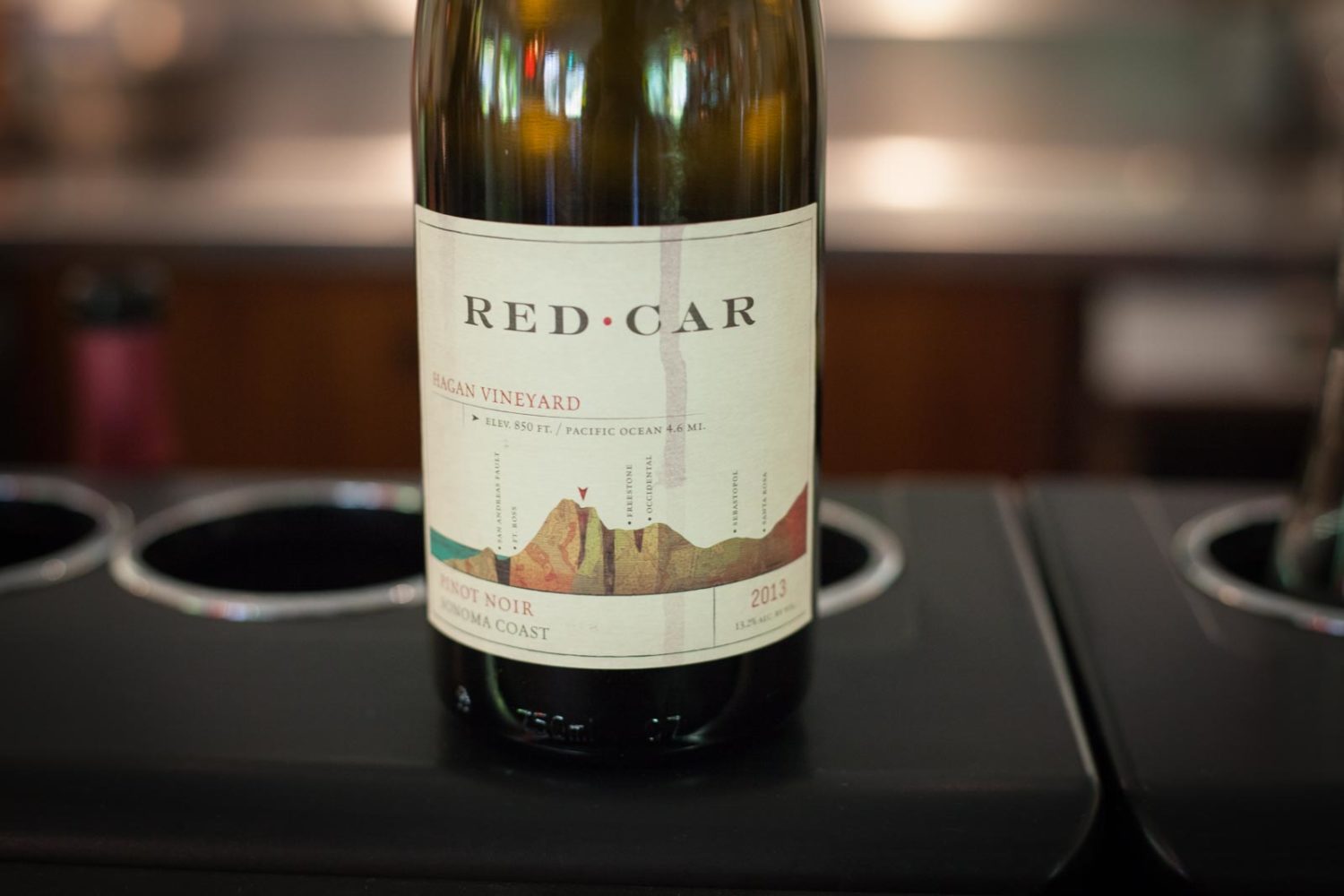

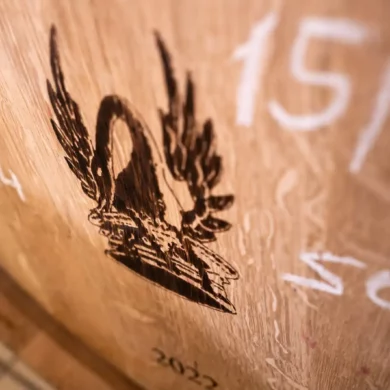
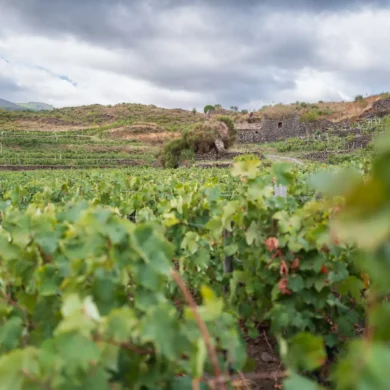
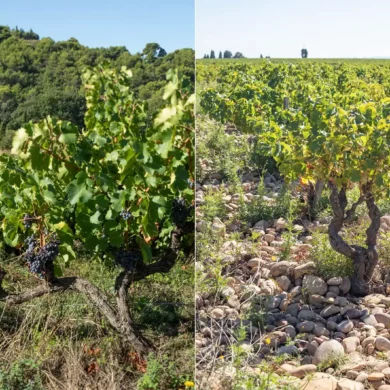
6 Comments